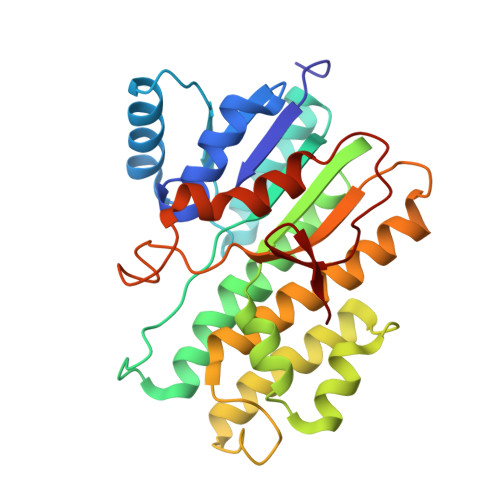Structural insights on the catalytic site protection of human carbonyl reductase 1 by glutathione.
Liang, Q., Liu, R., Du, S., Ding, Y.(2015) J Struct Biol 192: 138-144
- PubMed: 26381805
- DOI: https://doi.org/10.1016/j.jsb.2015.09.005
- Primary Citation of Related Structures:
4Z3D - PubMed Abstract:
The NADPH-dependent human carbonyl reductase 1 (hCBR1), a member of the short-chain dehydrogenase/reductase protein family, plays an important role in the ubiquitous metabolism of endogenous and xenobiotic carbonyl containing compounds. Glutathione (GSH) is also a cofactor of hCBR1, however, its role in the carbonyl reductase function of the enzyme is still unclear. In this study, we presented the crystal structure of hCBR1 in complex with GSH, in the absence of its substrates or inhibitors. Interestingly, we found that the GSH molecule presents in a configuration quite different from that was previously reported when substrate is binding to hCBR1. Our structure indicates that GSH contributes to the substrate selectivity of hCBR1 and protects the catalytic center of hCBR1 through a switch-like mechanism. The isothermal titration calorimetry and enzymology data shows that GSH directly binding with hCBR1 when there's no substrate exist. The enzymology data also shows GSH protects NADPH being attacked by oxidative small molecules. This is the first time that GSH is found to demonstrate such functions as a co-enzyme. Our crystal structure succeeds in providing critical insights into the substrate selectivity of hCBR1 and the interaction between hCBR1 and GSH.
Organizational Affiliation:
Department of Physiology and Biophysics, School of Life Sciences, Fudan University, Shanghai 200438, China.
















